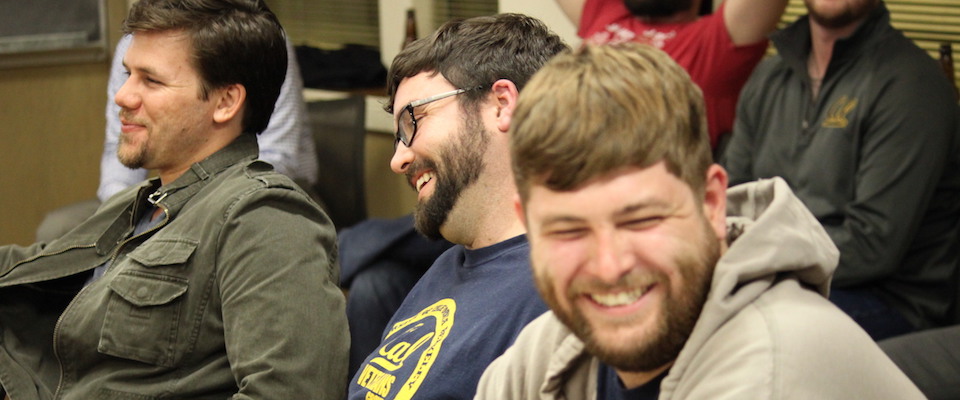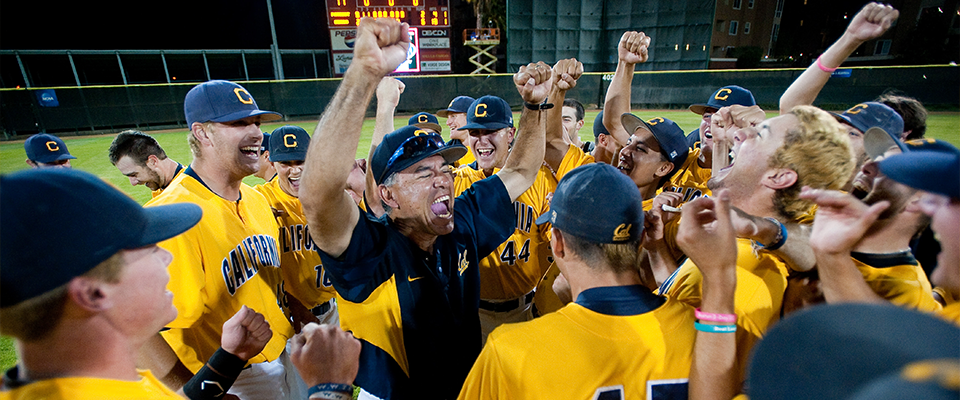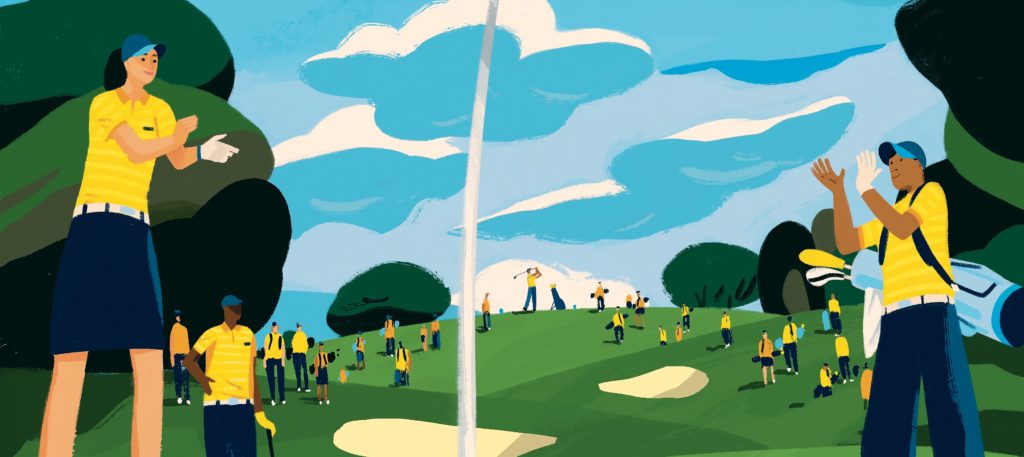This September, just three weeks into Laurina Sousa’s first semester at Cal, she was in crisis. “I had imposter syndrome,” she says. “I felt like I couldn’t relate to my classmates…I felt lost.”
A child of immigrants, Sousa grew up in Hayward, California. Money was scarce, so when she graduated high school, the thought of going to UC Berkeley struck her as comical. “I wanted to be a millionaire too,” she says, laughing. “College just wasn’t on the horizon.”
So she enlisted in the Air Force. During ten years of active duty she served as a flight-crew member for combat air missions. Afterward she enrolled at Chabot Community College, and she excelled. Suddenly the outlandish notion of a Cal education was within reach. She applied, was accepted, and transferred to Cal as a junior. But it was a hard landing. The massive classes, tangled bureaucracy, unfamiliar campus culture—it all overwhelmed her.
“I felt really pathetic because I’d faced a lot of challenges in my military career,” she says. “And to get broken down by school—I felt guilty for feeling that way. It was a real punch in the face.” She thought she should drop out.
This year, UC Berkeley welcomed 105 incoming student veterans, the highest number ever, according to Ron Williams, director of the Cal Veteran Services Center. Rough transitions are common for transfer students in general, and student veterans often face their own particular challenges, Williams says. To help ease the transition, the Cal Veteran Services Center provides a host of services including holistic counseling, academic advising, peer mentorship, and perhaps most important of all, access to a supportive community for veterans.
But it may be that the Center’s greatest challenge is convincing veterans that UC Berkeley is a welcome place for them.
 UC Berkeley hasn’t always done a good job of recruiting veterans. As a hotbed of anti-war protest over the decades, the University developed a stubborn reputation for being anti-military, and by extension, anti-veteran. Just a decade ago, Cal brought in fewer than half the number of veterans it does today. But the old numbers might be skewed, Williams says, because when he first took the position as director of the Veteran Services Center in 2007, some veterans told him they kept their status a secret out of fear that it would somehow be used against them.
UC Berkeley hasn’t always done a good job of recruiting veterans. As a hotbed of anti-war protest over the decades, the University developed a stubborn reputation for being anti-military, and by extension, anti-veteran. Just a decade ago, Cal brought in fewer than half the number of veterans it does today. But the old numbers might be skewed, Williams says, because when he first took the position as director of the Veteran Services Center in 2007, some veterans told him they kept their status a secret out of fear that it would somehow be used against them.
“I used to hold that belief that Berkeley is anti-military. A bunch of dirty, no-good hippies!” says Matthew Smith, a Cal senior and Marine Corps veteran. “But I’ve had nothing but positive experiences with my classmates at Cal.”
Dispelling the idea that Berkeley is hostile territory for service members is a priority for Williams. “That folklore is still out there,” he says. “But we’ve learned a lot, not just as a campus but as a country about being able to separate the war from the warrior.”
To help put the welcome mat out for veterans, the VSC employs a half dozen Veteran Outreach Peer Advisors (VOPAS), student veterans who visit community colleges around the state. They speak to veterans and their parents, sharing their own experiences on the Berkeley campus and the support they’ve received. Another selling point is the Cal Veterans Group, a student association started in 2004. Smith, president of the Cal Veterans Group and a VOPA himself, says the social network has been key to his success at Cal.
Smith deployed twice with third battalion first Marines to Iraq. He fought in the second battle of Fallujah, a notorious grisly conflict. “My unit lost 33 killed in action and close to 500 wounded,” he says. “It was a couple of pretty rough deployments.”
His transition to UC Berkeley wasn’t easy. Accustomed to the teamwork of the Marines, he found the competitive, individualistic environment at Cal jarring. “In the military you rely on the person next to you to get jobs done,” he says. “Whereas here, you have to rely on yourself. And that can be pretty stressful.”
For the first month and a half at Cal, Smith holed up in his apartment and focused exclusively on his studies. His stress level became unmanageable, so he reached out to the Veteran Service Center and the Cal Veterans Group. There he found peers he could relate to and counselors who would listen.
“Coming here from a small community college can be overwhelming,” he says. “I needed that community of veterans because I don’t always relate to my other classmates. This place can be lonely if you don’t have a network.”
“In the military, seeking out help can lead to negative repercussions whether formal or just from peers. Seeking counseling can be seen as a sign of weakness.”
The Center’s outreach efforts appear to have paid off. Cal’s student veteran population is now close to 400, higher in number than it’s ever been, according to Williams.
But getting student veterans to enroll at Cal is just the first step. The other purpose of the Veteran Services Center is supporting them once they are here. The Center provides an array of mental health services, including twice a week visits by social workers from the Tang Center, weekly sessions with a psychologist from the Veterans Administration, and drop-in academic counseling. Williams helps students navigate university and federal bureaucracy, coaching them to maximize their financial aid and VA benefits. The Center also offers a class “Veterans in Higher Education” each semester that teaches veterans how to make the best of their Cal experience.
One challenge, however, is convincing veterans to reach out for assistance—and that can be tricky.
“In the military, seeking out help can lead to negative repercussions whether formal or just from peers,” says Tova Feldmanstern, a social worker at Cal’s Tang Center. She provides counseling at the Veteran Services Center four hours a week. “It’s a very macho, masculine culture, and seeking counseling can be seen as a sign of weakness.”
“We’re working to dispel the military ethos of just ‘power through it,’ and ‘you don’t need to seek services because it’s somehow acknowledging that you’re damaged or broken,’” Williams says. The greatest tool for convincing veterans to seek help, he says, is other veterans. Mentors like Matthew Smith who have experienced trauma themselves help show other veterans that seeking out mental health care is okay.
Just a decade ago, such support would have been difficult to come by at Cal. The VSC didn’t exist until 2007, when California Governor Arnold Schwarzenegger’s “Troops to College” program directed all public colleges and universities in the state to assign a point person to help recruit and retain student veterans. At Cal, that was Williams.
Thanks to a recent major donation from alumnus Coleman Fung, the Veteran Service Center was able to hire more staff and move to a larger office with a study space and meeting room for students. Williams’ first hire was Luis Hernandez, a Marine Corps veteran and Cal graduate. He worked as a job coach for homeless veterans in San Jose after graduation, and jumped at the opportunity to work at Veteran Services Center as the academic achievement counselor.

“Having worked with folks on the homeless side, I thought this job was a chance to help our generation of veterans not get to that point,” says Hernandez.
Williams and Hernandez now provide a one-two punch of support for veterans. “Ron’s like this man of great philosophical knowledge. He’s full of these great quotes,” says Smith. “And Luis is a veteran himself, so he can really connect. You can talk to Luis about anything.”
In order to maximize the good that the VSC is doing, Williams has partnered with outside organizations to evaluate the strengths and weaknesses of the program. Keith Armstrong, the director of the Student Veteran Health Program at the San Francisco Veterans Administration, has developed a student survey to evaluate veteran services provided by colleges and universities around the Bay Area. The results showed a strong program at Cal.
“They are doing it the right way,” Armstrong says. “They’ve built a strong community for veterans and care deeply. And they’ve created a space where veterans can kind of let their hair down and talk with people who understand what their experience is like.”
If student veteran outcomes are any measure, Armstrong is right. The graduation rate for veterans at Cal is 92 percent, far higher than the national average for veterans of 54 percent—and a tick higher than Cal’s overall graduation rate for undergrads.
Where Armstrong believes Cal can still improve is in bridging the divide between veterans and other students on campus. Williams agrees.
“Too many times when folks hear veteran, for good and complicated reasons, the first thing that comes to mind is PTSD,” Williams says. “The immediate reaction is that this person may be in some way damaged.” But Williams wants to promote the idea that, far from damaged, student veterans at Cal are assets to the University community. They bring a wide breadth of experience and knowledge into the classroom. Whether making decisions with lives on the line, or working with multi-million dollar equipment, veterans have taken on responsibilities that most undergrads haven’t.

The Cal Veterans group often engages in community service, from on-campus events like cleaning up Strawberry Creek, to efforts beyond campus such as the large contingent of Cal Veterans that spent weeks assisting victims of the North Bay fire in Santa Rosa. They are now working to raise money for veterans whose houses burned down.
“When something goes wrong, when there is catastrophe, this community because of their training and because of who they are as human beings, they run toward it when others might run away,” Williams says. “It’s difficult not to be inspired.”
For Laurina Sousa, the junior transfer student who was considering dropping out, support from the Center came just in time. “Some days I would come in and just cry. And they’d talk me through it.” Two months later, she feels as if she’s got a handle on things, thanks in large part to the support she’s received from the Veteran’s Center.
Now she’s helping the Center to overcome a challenge of its own: getting female veterans to take advantage of the services. Like the military, the veteran community on campus is mostly male, and that can be a little intimidating for female veterans, Sousa says. Each semester they hold a women-only lunch where female veterans can meet and network. Sousa will lead the next meeting and is planning a holiday event for female student veterans and the female spouses of veterans.
Though Sousa understands why female veterans might feel uneasy at the male-dominated center, she has found the community to be welcoming, loving, and supportive.
As events on campus this year illustrate, UC Berkeley will likely continue to have a reputation as a focal point for political controversy—and many will likely cling to the view that Cal is anti-veteran. But Williams and Hernandez hope that within the campus community, awareness of the presence and contribution of veterans will grow with time, and dialogue between veterans and non-veterans will become more nuanced—beyond the simple “thank you for your service” platitudes. There is a broad range of reasons people serve in the military. Some do it out of feelings of patriotism, others because they have few options.
“The more we can relate to someone in our shared humanity, the more we break down stereotypes and break down the monolithic image of the ‘veteran,’” Williams says. “Whether it’s a student veteran, someone who identifies with the LGBTQ community, or someone who’s undocumented, we’re trying to expand access, opportunity, and have members of these communities infuse and impact others.”





















